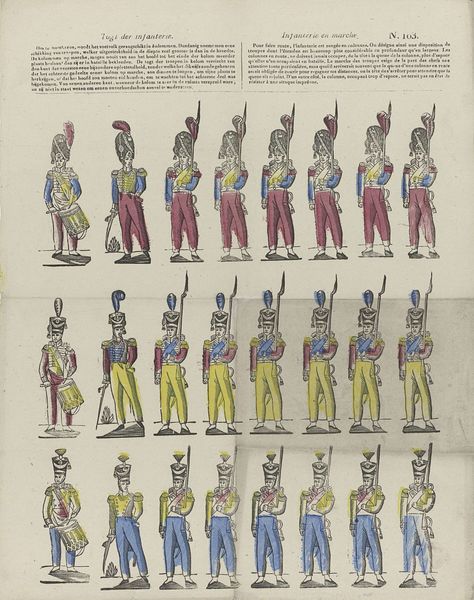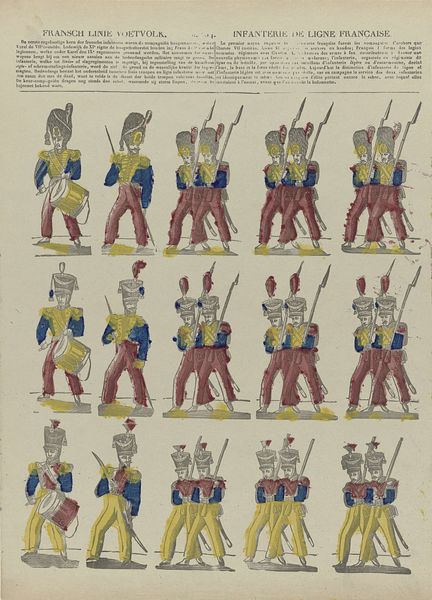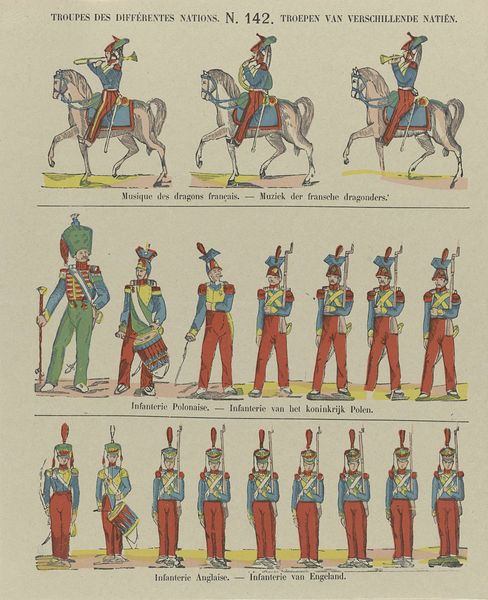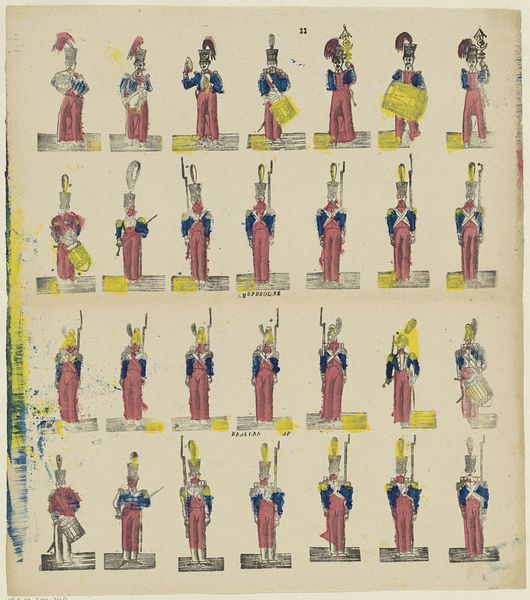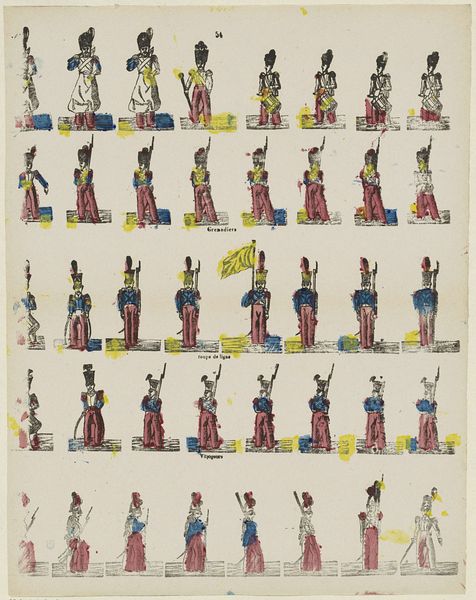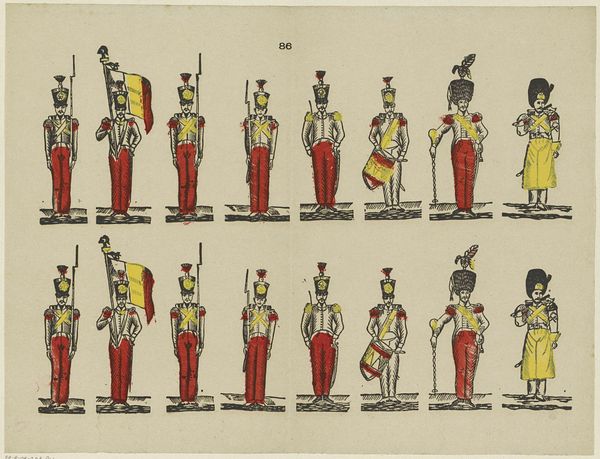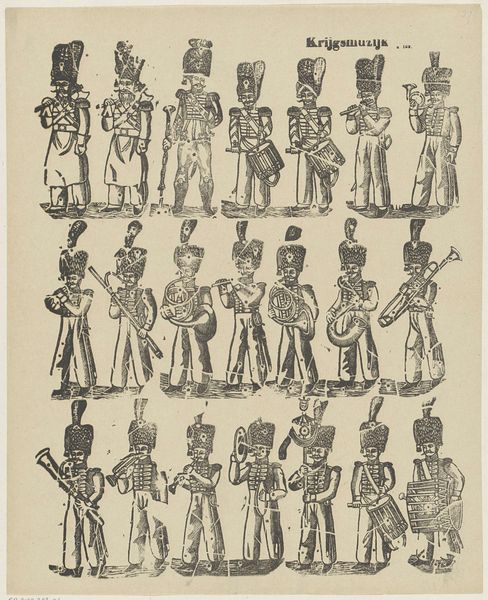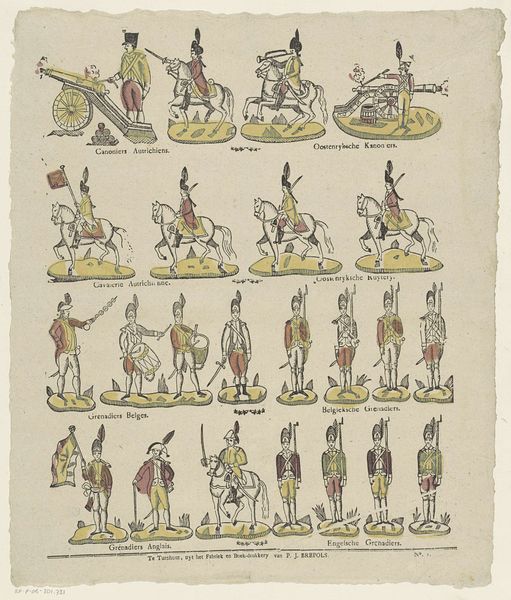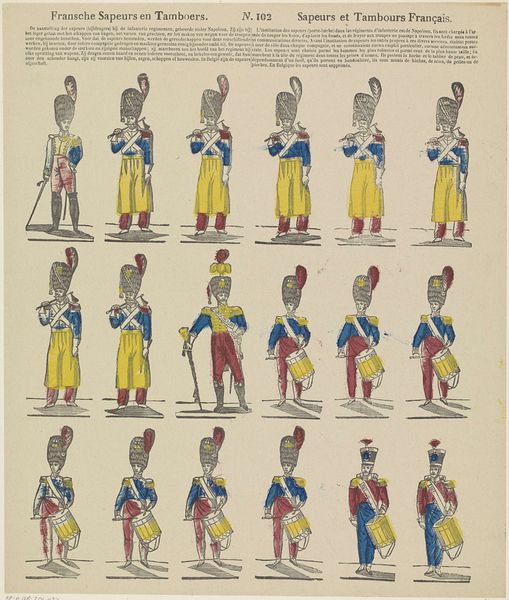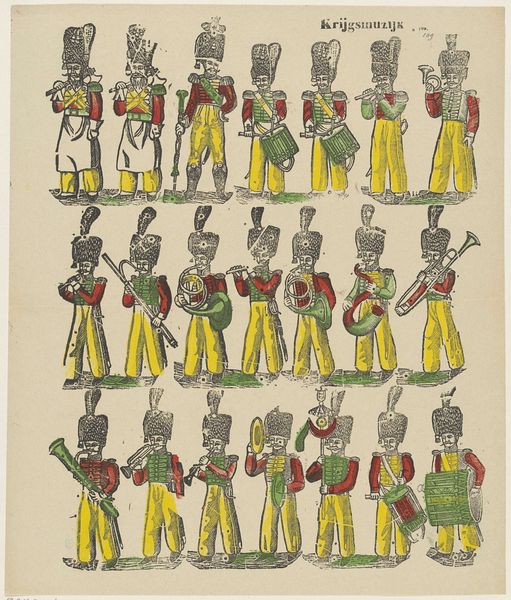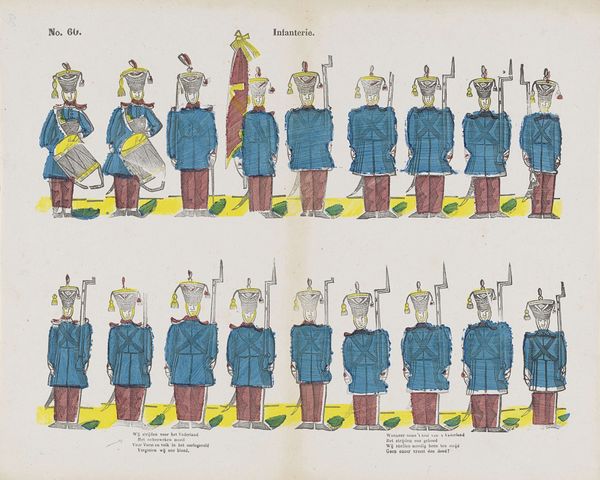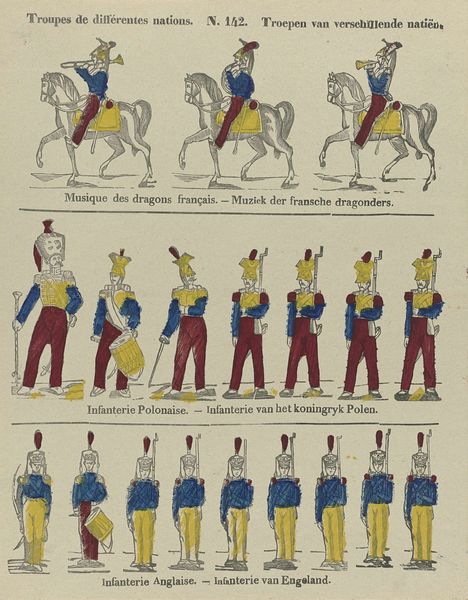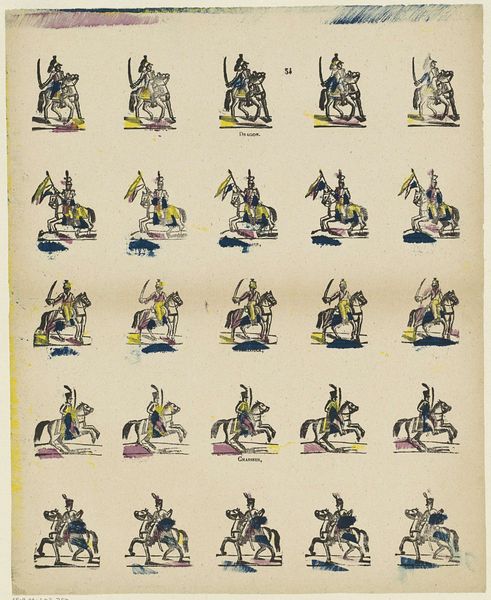
drawing, paper, ink
#
portrait
#
drawing
#
figuration
#
paper
#
ink
#
geometric
#
line
#
genre-painting
#
academic-art
Dimensions: height 386 mm, width 318 mm
Copyright: Rijks Museum: Open Domain
Curator: This is a drawing called "Militairen", made by M. Hemeleers-van Houter, sometime between 1827 and 1894. It's ink on paper, and we're fortunate to have it here at the Rijksmuseum. Editor: It feels like a children's illustration, almost like toy soldiers on parade. The rendering is so flat and the colours are quite vibrant, even whimsical. Curator: It's interesting you say that. There’s a certain rigidity, a regimentation to these figures that speaks to the very real discipline demanded of soldiers, of course, but your sense of child-like play makes sense if you consider how war was, even at that time, being consumed, processed by a civilian audience with ever more availability for pictorial consumption. Editor: That’s a fascinating point. It also feels like a very controlled portrayal of masculinity, these neat rows of men, identical uniforms, everything in its place. And there’s that slight absurdity with their disproportionately large hats. What's the function of emphasizing the almost cartoonish aspects of these figures? Curator: Well, it highlights a tension present in much military art of the period: the need to glorify the heroic while also abstracting the individual within the larger war machine. By using flat colours, and almost schematic line-work, Hemeleers-van Houter seems to want to depersonalize and almost systematize war, turning the pageantry into something almost, well, diagrammatic. It becomes a tool, and perhaps even propaganda, within a rapidly industrializing age of warfare. Editor: And those colours – that bright red and blue. On one hand, they're the colours of power, the visual cues of authority, yet in this simplified, almost playful context, do they subtly undermine the solemnity we expect from military representations? Are we meant to see these soldiers as instruments? Curator: The visual strategy seems calculated to evoke the pomp without the trauma. Hemeleers-van Houter lived through a time of massive socio-political upheaval. Depicting them with a removed almost toy-like quality may serve as both social commentary, critique, but perhaps, at once, also wishful thinking. Editor: It's interesting how a seemingly simple drawing of soldiers opens up into complex ideas about militarization and society. Thanks for walking me through this, and I will make sure to look more carefully in the future. Curator: My pleasure. The public and art can teach each other so much.
Comments
No comments
Be the first to comment and join the conversation on the ultimate creative platform.
